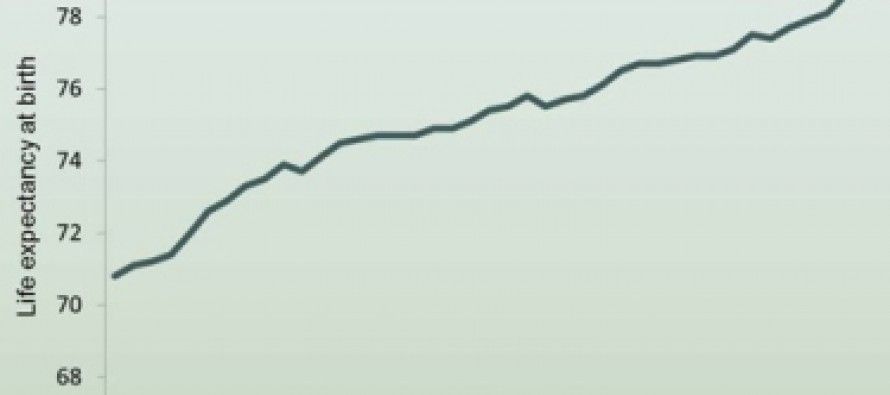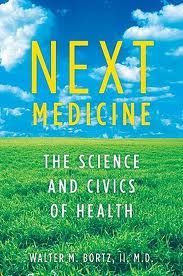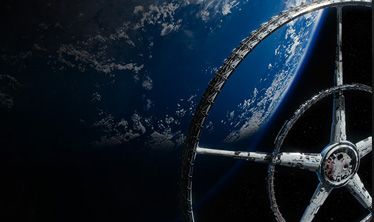Life imitates sci-fi: Why CA pension crisis is sure to get far worse

 The debate in California over public employee pensions has grown familiar in recent times. Those who demand reform finally appear to have momentum.
The debate in California over public employee pensions has grown familiar in recent times. Those who demand reform finally appear to have momentum.
In Sacramento, Gov. Jerry Brown won passage of a pension reform measure in September 2012. While many thought it didn’t go nearly far enough, its approval showed an acceptance of a new conventional wisdom: that benefits were unnecessarily generous. In San Diego and San Jose, city voters overwhelmingly approved much more sweeping reforms.
But there is a hugely disruptive wild card in the pension debate that is rarely recognized. It is the growing consensus among longevity experts — a large number of whom are based in California — that they are nearing breakthroughs on several fronts that promise to dramatically expand how long humans live.
According to data released in 2009, the California Public Employees’ Retirement System expects public employees with a current age of 55 to live to be 81.4 if male and 85 if female. These actuarial assumptions are built into how much public agencies are expected to set aside for all employees, including new hires in their 20s.
Experts’ life-expectancy predictions far higher than CalPERS
 The Golden State’s best-known anti-aging experts — Dr. Aubrey de Grey and Dr. Walter M. Bortz II — are on the short list of the world’s leading authorities on the topic. Their analyses of anti-aging efforts build off sharply different approaches; de Grey is controversial and Bortz conventional. But both their assumptions suggest CalPERS’ actuarial assessment of its long-term funding needs is comically optimistic.
The Golden State’s best-known anti-aging experts — Dr. Aubrey de Grey and Dr. Walter M. Bortz II — are on the short list of the world’s leading authorities on the topic. Their analyses of anti-aging efforts build off sharply different approaches; de Grey is controversial and Bortz conventional. But both their assumptions suggest CalPERS’ actuarial assessment of its long-term funding needs is comically optimistic.
De Grey, a native of England, oversees the SENS Research Foundation, a nonprofit organization based in Mountain View. SENS stands for Strategies for Engineered Negligible Senescence. His focus has been on the idea that the aging process can be “cured,” allowing humans to live far longer thanks to “regenerative medicine” that stops the deterioration of the body. Initially scorned by many gerontologists, de Grey’s views are taken more seriously with each passing year. He believes that the average life expectancy of Americans who are now alive is likely to be the early 90s, and that in 25 years time, it could be far longer as “regenerative medicine” becomes practical.
Bortz, a native of Philadelphia, is a professor at Stanford University School of Medicine. His research has demonstrated the importance of physical exercise to “robust aging” — living long with full mental and physical faculties. Bortz sees vast progress ahead in gaining an understanding of human metabolism and its relation to longevity. He believes average life expectancy of Americans could reach 100 in coming decades.
California a world leader on longevity research
But de Grey and Bortz are only part of a wide array of longevity researchers in California, supported by a variety of public, nonprofit and private institutions.
 The California Institute for Regenerative Medicine — the state stem-cell agency financed by a 2004 bond — has backed dozens of ambitious age-related research projects, and agency officials are particularly excited about prospects for delaying the onset of Alzheimer’s disease, which often reduces life expectancy by six years or more.
The California Institute for Regenerative Medicine — the state stem-cell agency financed by a 2004 bond — has backed dozens of ambitious age-related research projects, and agency officials are particularly excited about prospects for delaying the onset of Alzheimer’s disease, which often reduces life expectancy by six years or more.
Stanford and UCLA each have a Center on Longevity. UC San Francisco is home to some of the most promising longevity research in the world.
The J. Craig Venter Institute in San Diego — founded and run by the scientist who in 2001 became the first to complete sequencing and analysis of the human genome — by itself could change the world. Venter is pioneering the development of synthetic genes, which have stunning potential to remake life as we know it.
There’s also Google’s new “moon shot” — a project called Calico that has as its goal nothing less than “solving death.” It’s expected to be based in Silicon Valley.
A list of California-based longevity research with transformational possibilities could go on at some length. But the point of providing this background isn’t to offer testament to the Golden State’s enduring strengths in the sciences. It’s to lay the groundwork for thinking about what life in our state might be like in a quarter-century if life expectancy does balloon to 100.
The Golden State version of ‘Elysium’
 Having a defined-benefit government pension when you live on average until you are 81 or 85 is already an immensely lucrative and reassuring fact of life for public employees. But having such a pension when you live until 100 is a gilded gift, one that makes past complaints about government employees being a special protected class seem simply inadequate.
Having a defined-benefit government pension when you live on average until you are 81 or 85 is already an immensely lucrative and reassuring fact of life for public employees. But having such a pension when you live until 100 is a gilded gift, one that makes past complaints about government employees being a special protected class seem simply inadequate.
Barring a change in benefits or a dramatic increase in the minimum retirement age, public employees would enjoy an advantage so pronounced that it would be somewhat akin to that owned by the privileged elite who live in a satellite colony rotating around a decaying Earth in the science-fiction film “Elysium.”
Of course, a huge gain in life expectancy would affect public policy in many other ways as well. Funding for Social Security and Medicare already looks imperiled because of the retirements of millions of baby boomers and the declining birth rate. If life expectancy increased to 100, it is impossible to conceive of a federal budget in anything even vaguely resembling its present form.
The main hope of averting fiscal disaster then might be what economics writer Matt Yglesias and some futurists call the emergence of a “post-scarcity” world — one in which combinations of technology have sharply reduced the cost of material goods.
 But if praying for a “post-scarcity” world is the best that most private-sector workers can do in contemplating how they’ll fare in a California with life expectancy of 100, that’s a striking contrast to the outlook of government workers. They can look forward to three or four decades of retired life at 75 percent to 90 percent of their final pay. The rest of us? We can pray our reverse mortgages prop up our lifestyles for a while before we’re forced to mooch off our children or to move into a new urban phenomenon: slums for the elderly.
But if praying for a “post-scarcity” world is the best that most private-sector workers can do in contemplating how they’ll fare in a California with life expectancy of 100, that’s a striking contrast to the outlook of government workers. They can look forward to three or four decades of retired life at 75 percent to 90 percent of their final pay. The rest of us? We can pray our reverse mortgages prop up our lifestyles for a while before we’re forced to mooch off our children or to move into a new urban phenomenon: slums for the elderly.
“Elysium” writer-director Neill Blomkamp has said that income disparities he witnessed in California and Mexico helped inspire him in coming up with the story for his dystopia, a heavy-handed homage to the Occupy movement.
The version of “Elysium” we could be headed for may have California roots of a different sort. The haves vs. have-nots scenario of our future may not be the 1 percent vs. the 99 percent.
It will be the 10 percent or so of public employees who have defined-benefit pensions that last longer than their entire careers vs. the rest of us.
Related Articles
GOP Finally Gets Budget Action
MARCH 26, 2011 By JOHN SEILER There are a lot of problems with the list of budget demands Republicans proposed,
LOL: Feds now tout 'higher-performing' rail, not bullet train
The federal government has long asserted that its provision of $3 billion-plus in 2009 “stimulus” funds to California for its
State finds savings in minimum wage increase, but counties get the bill
The good news: Last year’s deal to increase the minimum wage won’t cost the state nearly as much as was projected.




